reflections and remarks: notes on what I enjoyed reading the most in 2023 II
6-10. Second best.
Hey again.
As promised, here are my next five favorite books I read in 2023. How does last year already feel like a lifetime ago?
They’re Going to Love You by Meg Howrey
The first time I picked up They’re Going to Love You in The Strand Bookstore I thought “hmm looks cute,” flitted through the first few pages, and decide to allocate the $30+ I would have spent on a hardcover on some other title (which proved to be unmemorable.)
Months later, I was preparing to head to Florida’s panhandle to relax for a week before studying for the Bar Exam and was curating my abbreviated summer reading list. I’m infamous for reading heavy volumes on the sunny white sand shores of the emerald coast, but under the circumstances, I thought maybe I should have a real beach read this trip. Thus, I checked out They’re Going to Love You from the NYPL.
This novel proved to be no beach read, at least, in the traditional sense. While I wouldn’t call it serious literature, it strikes your senses an emotional chord so deep, you’ll be reeling for days. In this way, it reminds me of Writers & Lovers by Lily King (a favorite from 2022): a premise and cover art that seems so feminine there is no way it could absolutely wreck you, right? WRONG!
Meg Howrey masterfully builds an otherworldly universe of beauty, bloodied feet, and backstabbing, also known as ballet. With the same clarity, she explores identity, complex familial relationships, and grief.
The protagonist, Carlisle, was born with a pedigree of ballet royalty. Her mother, a retired ballerina, whisks Carlisle away from the magical city of New York when she’s just a girl upon discovering Carlisle’s father is gay. As Carlisle unravels the story of her life some forty years later, we learn of her complicated relationships, how AIDS ravaged the New York City ballet and gay community (...a bit of crossover there), and why she, who loved her father so dearly, became estranged from him later in life.
This complex, stunning, precise, and magnetic book is must-read.
2. Kiki Man Ray: Art, Love and Rivalry in 1920’s Paris by Mark Braude
I am predictable. My pleasures are simple. I like cold gin, stinky cheese, and books about bohemians in early modern Paris.
Kiki Man Ray, a nonfiction book delving into the life of its namesake, delivered. I first want to admit I was drawn to this book because I’m an art history nerd who loves Man Ray (I even paid homage to him at the Montparnasse Cemetery on a gray winter day in early ‘23). I was, sadly, ignorant to the woman, the goddess, the legend, Kiki.
Kiki was the muse. You’ve probably seen Kiki before… I’m sure some of the photos I’ve inserted here are familiar….
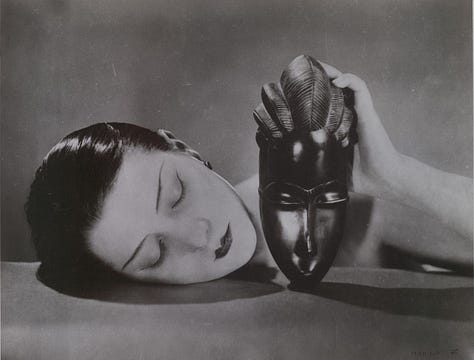

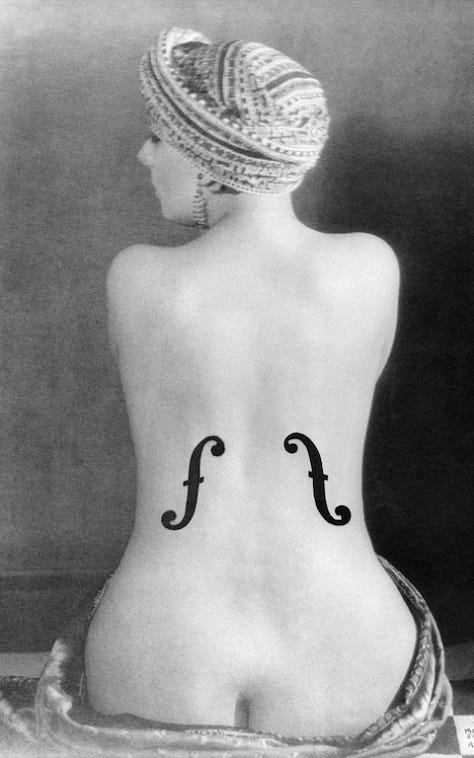
Or perhaps it feels familiar, but you don't know why. Maybe this recognition is teased by the tribute the modern-day muse Julia Fox pays with her Man Ray/Kiki tattoo.
But you never knew Kiki, did you? If I’m right, and I usually am (everyone admits to this, particularly my boyfriend) you were missing a hell of a story. As a woman, she has unfortunately become a historical footnote. Thank God for Mark Braude, bringing her back to center stage.
Kiki was born to a poverty-stricken mother who kicked the beautiful spitfire to the curb before her frontal cortex finished developing. As a result, Kiki had to become a hustler, flashing her junk for a few coins to scrape up just enough to have a place to sleep at night. But Kiki was spirited and surprisingly likable, despite her hardness. By chance, she struck onto the Avant Grade scene, getting paid to pose for artists (which was seen as not-so-couth back in the day), and thus an icon was born.
Man Ray was obsessed with Kiki (in like a red flag sort of way.) Together, Man Ray and Kiki’s careers flourished. This well-researched read brings you back to the Bohemian Left Bank and through the trials and tribulations of one of the most fabulous and resilient women to ever walk those streets.
It’s no wonder this book made the “bests” lists from almost all my favorite publications in 2022.
3. The Bell Jar by Sylvia Plath
Is it lame of me to put a reread of a classic on my top ten? Is it lame of me to push it so far down?
To be honest, I typically hold back from “reviewing” or “rating” epic classics like The Bell Jar. Because seriously, what the hell could I add to the conversation. It's a masterpiece, and I am just reading it on the subway before work.
This year I began my career in New York City, so it really felt like the right time to pick up this book wherever I set it down during my senior year of high school. It was such a fantastic novel to read at this point in my life, and generally, that I couldn’t not include it. And yet, I don’t really have anything new to say about it. I enjoyed reading it, sue me. I’ll read it again sometime. You should too.
4. The Slip: The New York City Street that Changed American Art Forever by Prudence Peiffer
Like every other basic bitch, I’ve been really into abstract expressionism for most of my sentient existence. This began when I realized Jackson Pollock seemed really cool and sexy during an art history class in high school and was propelled forward when I read Ninth Street Women by Mary Gabriel in 2019 (yes, I quickly realized that Joan Mitchell, Lee Krasner, Elaine de Kooning are far superior to their male counterparts.)
One day I was flipping through the New Yorker, saw a review of The Slip and thought, “okay so were these like the Ab Ex rejects?” and “why would you want to live down on the Coenties Slip when everything was happening in the Village?” Of course, I was familiarish with some of the Coenties Slip artists, like Robert Indina, Elsworth Kelly and Agnes Martin, but I had so many questions.
My curiosity peaked.
Reading The Slip opened my world in so many ways. This book is a group biography of influential artists and their peers who inhabited a forgotten warehouse somewhere in the tippy bottom of Manhattan during a ten-year period. Because, at the time, this bunch was mostly outside of the zeitgeist revolving around Washington Square Park, their works are unique and really had something new to say.
The best part of this book was coming to understand this loosely held together movement's basis of theory, because although disjointed, it was radical and had a lasting impact on the art world and popular culture. At the same time, I immensely enjoyed getting to know each of the artists as the fascinating individuals that they were (are).
A brilliant, masterfully written non-fiction that reads more like a real story, if you know what I mean.
5. The Mandarins by Simone de Beauvoir
Oh my god this book is dense. It is a real writer’s roman à clef. Only auto-fiction could be this for-real. If opaque, long-winded, and challenging books scare you, stop reading here. Go on with your happy little time. Forget about The Mandarins!
This book is for masochists, specifically who adore Simone de Beauvior. I can raise both hands to that, and I have to say, I really enjoyed reading this novel (even if it sounds like I didn’t).
The Mandarins follows the domestic dramas, the cheap thrills, the political battles, and the shifting relationships of a particular set of French intelligentsias during the 1950s. De Beauvior writes herself into this narrative as Anne and makes some pretty hilarious digs at Albert Camus and Jean-Paul Sarte (Henri and Robert, respectively). What draws me in to De Beauvior’s work the most is her themes of feminism, existentialism, and political morality. The Mandarins is no different.




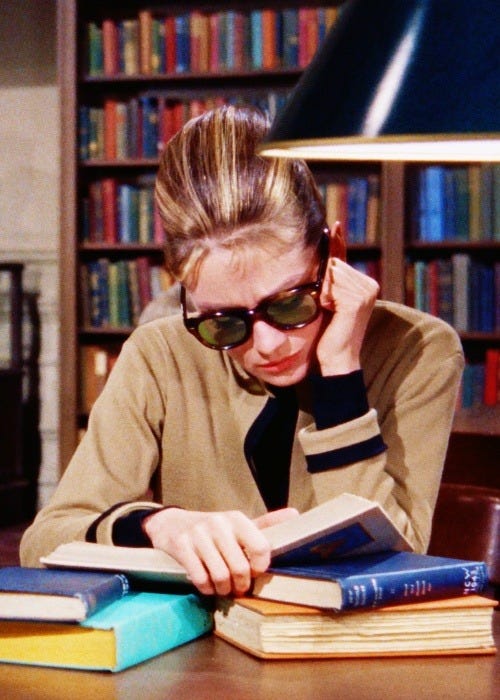
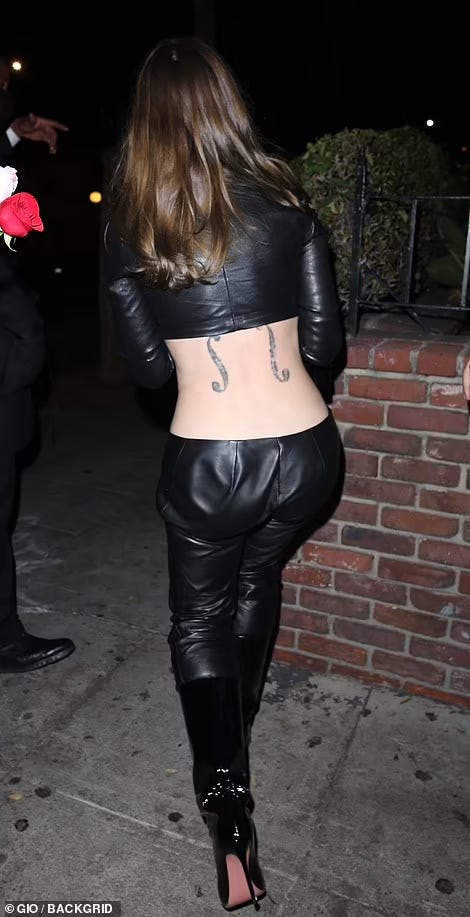
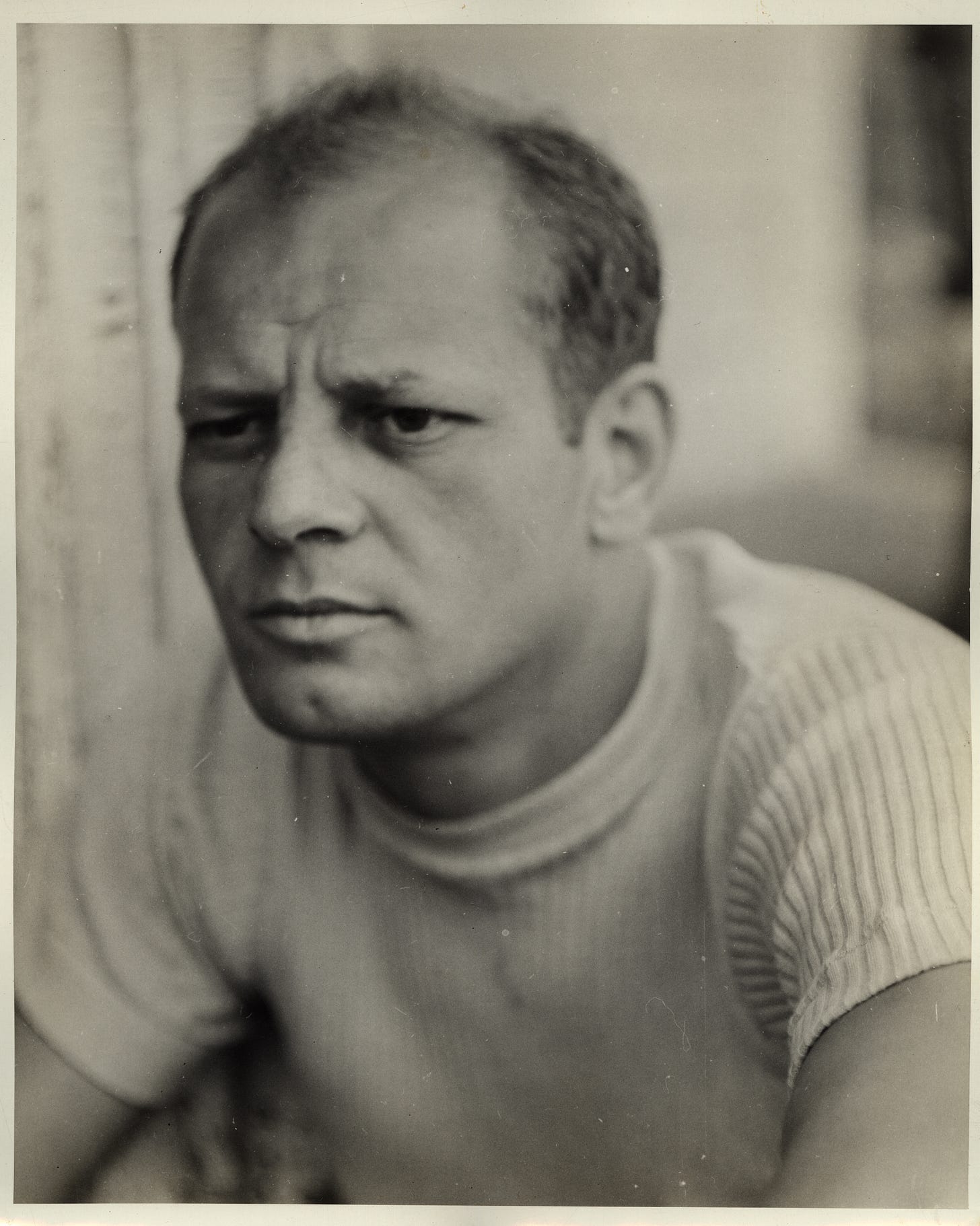
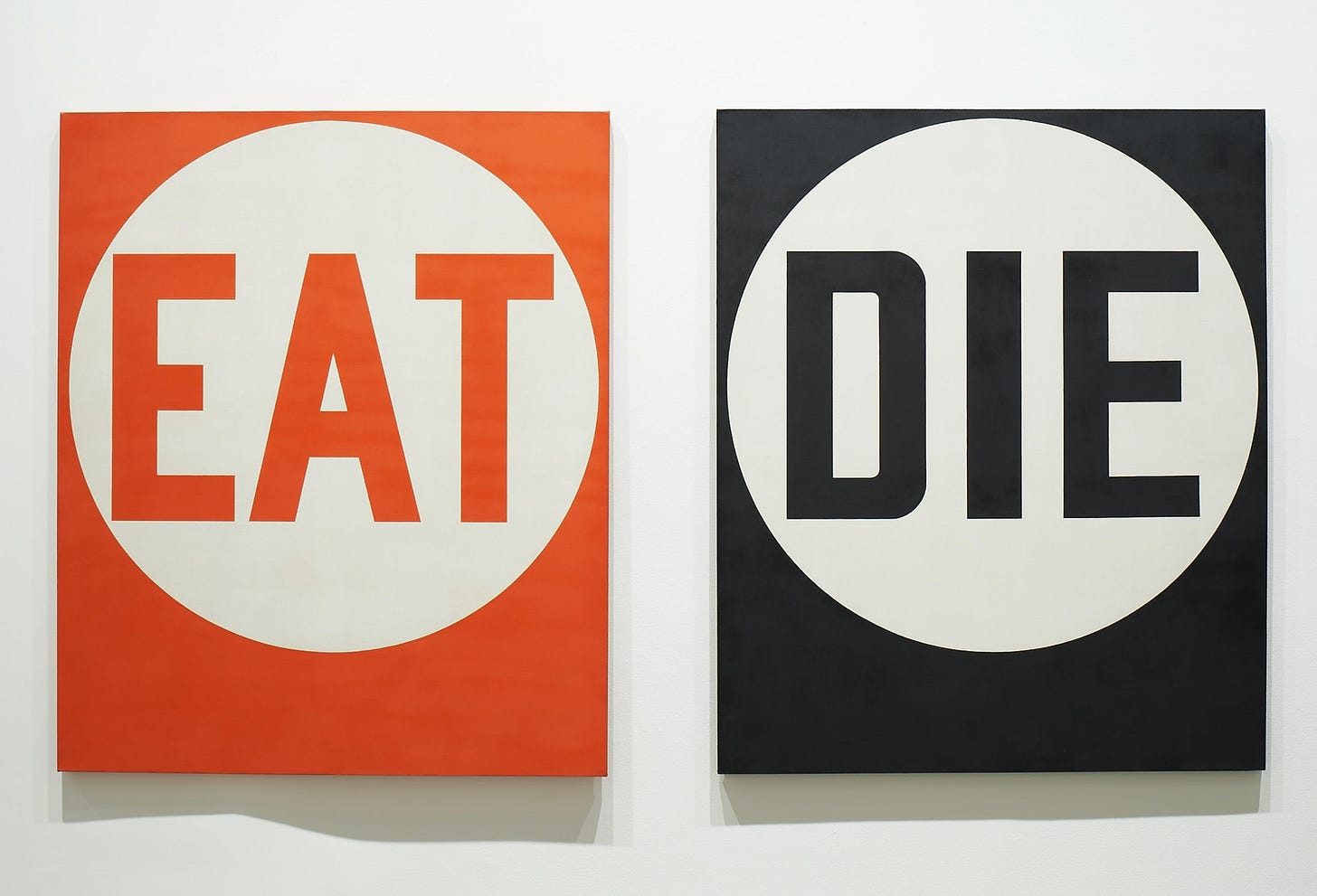
Hemingway VS Fitzgerald was good. There's a newer one by Mary Dearborn I was looking to get recently as well.
I’ve read so many Hemingway bios. The early 1900’s expat stuff is fascinating. Probably why I made you read The Sun Also Rises in class! LOL